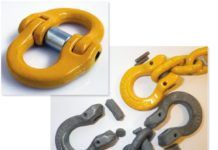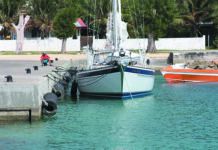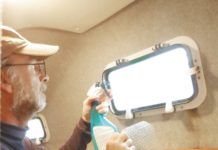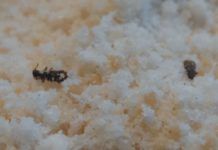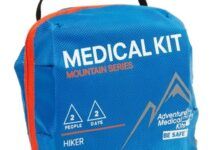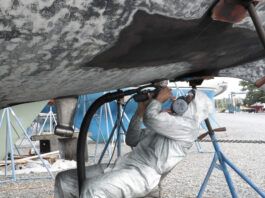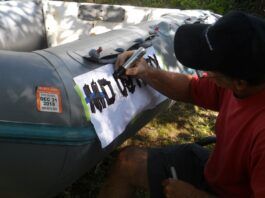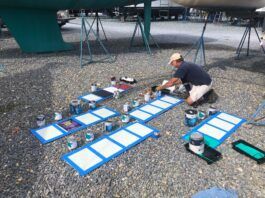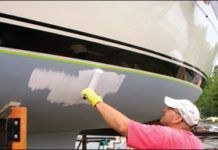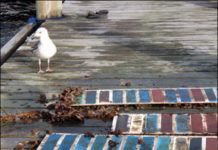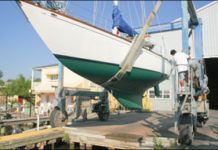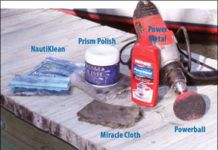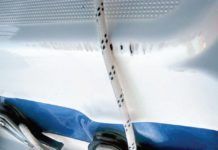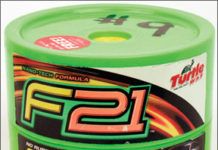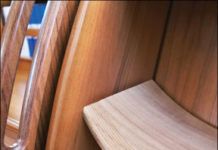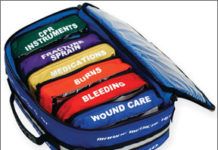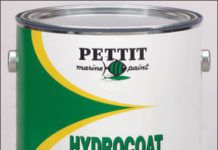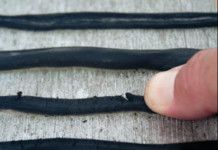Mailport: 04/09
I read with interest your evaluation of first aid kits, which wrapped up with the final installment in the December 2008 issue. Id like to add a couple of points: Weekend, cruising, and bluewater sailors should invest in a good up-to-date first aid and CPR course. It is as important as a functional bilge pump. The responsible sailor can outfit a substantial and superior first-aid kit for much less money than a commercially available kit. The kit should be appropriate for the expected duration a victim will need treatment prior to evacuation. Most commercial kits contain a lot of fluff and are unnecessarily redundant-a lot of Band-Aids. I stress to distance sailors stocking a few prescription items and aggressive treatment for seasickness, beyond Bonine. I favor a solid medical text such as "A Comprehensive Guide to Marine Medicine," by Dr. Erick Weiss and Dr. Michael Jacobs, or "Medicine for Mountaineering and other Wilderness Activities," by James Wilkerson. The latter is available from Mountaineer Books. Both texts give guidance on stocking kits appropriate for your boat. Remember, the victim may be the captain or medical officer, and a novice may be the one rendering treatment. A medical guide is an invaluable resource.
Bottom Paint Tests 2009 Spring Update
Over the years, Practical Sailor has tracked the evolution in marine antifouling paints. Shaped by government regulations, environmental concerns, and industry innovations, the shift started with tin-based paints in the 1980s. After tin-based paints came under fire for the harm they cause marine life, copper-based paints grew in popularity. Now, concerns about the impact of copper on the environment have led to the development of copper-alternative paints, such as zinc-biocide and water-based antifoulings. We continue to sort through the data to help you find the best bottom paint for your boat. This report offers an update to our panel tests after six months and 18 months in the water as well as the head-to-head tests under way on our test boat fleet. Some of the best performers (out of 72 paints tested) at six months were hard paints and specialty antifoulings such as Copper Shield 45 Hard made by Blue Water, VC Offshore by Interlux, Copper Guard by Pettit, and Sharkskin by Sea Hawk. The best ablative paints at six months included Copper Shield SCX 45 by Blue Water, EP-21 by Epaint, and Hydrocoat and Vivid Free by Pettit. The top long-term bottom paints-those appropriate for multi-season antifouling protection-included Interlux Micron 66, Pettit Trinidad SR, and Interlux Epoxycop. These extensive tests also included marine bottom paints from Awlgrip, Flexdel, and Microphase Coatings. The lineup also covered re-branded products from West Marine.
A Smorgasbord of Tools and Patience Are Required For the DIY Epoxy Barrier Coat...
Practical Sailor Technical Editor Ralph Naranjo sets out to remove a few layers of bottom paint and the underlying Interlux InterProtect epoxy barrier coat, which was applied to his boat hull in 1982. While non-toxic, eco-friendly paint removers work well on removing antifouling paints, one-part enamels, and varnish, all bets are off with epoxy coatings. With a good selection of chisels, a penchant for keeping them sharp and no aversion to hard work, Naranjo battles the pock-marked, blistered barrier coat. His arsenal included three chemical strippers-Peel Away Marine Safety Strip, Peel Away Smart Strip, and Franmar Soy Strip, an array of sanding disks, and random orbital sanders. His report offers how-tos, tool tips, and a rundown of the costs associated with the DIY barrier coat removal to answer the question: Is it really worth doing it yourself?
The Great Metal Polish Showdown
Practical Sailor last tested metal polishes in March 2007, and the best choice for most jobs was the Miracle Cloth. The treated cloths best feature is its ease of use. Since that test, Practical Sailor has come across a couple other products: another impregnated cloth product called the NautiKlean, two cloths that are meant to be used together; and Mothers Power Metal, a polish that can be used with the drill-mounted Powerball, a foam ball that allows power polishing around curves and in tight spaces. Theres also a smaller mini-Powerball. Testers pitted the NautiKlean cloths and the Mothers mini-Powerball and Power Metal Polish against the Miracle Cloth on a variety of metals, including anodized aluminum, stainless steel, and bronze. Testers also included a one-year-old tub of Prism Polish, a conventional polish that did well in the last test.
Wear and Tear Pad Review
Over time, chafing from lines can actually wear away gelcoat. Likewise, chips will appear where hatches or ports bang. While eliminating chafe is the best course of action, in some cases, a protective patch can be a viable solution. Faced with a chafe problem on his own boat, sailor Andrew Grogono developed the Wear and Tear Pad, an ultra-thin (.002 inches) piece of 301 stainless steel backed by an all-weather double-sided tape. To use, just peel off the backing paper and stick the patch on the hull at the point of friction or impact (making sure the hull is clean and dry, first).
Practical Sailor Resumes its Search for the Best Boat Wax
Practical Sailor tested a field of 10 tubs of paste waxes for ease of application, gloss, texture, finish, and price. Most of the products did a fairly good job of producing initial shine. The two waxes with the most glossy fiberglass test patch were not the easiest to apply nor were they the least expensive. The boat wax test included marine paste waxes and car waxes-some with carnauba-from Meguiars, Turtle Wax, 3M, Collinite, Kit, Mothers, Nu-Finish, and Star brite. You need only dip a toe into this topic to realize that there are almost as many recipes for a glossy hull as there are sailors whod rather do anything than wax their hull. As long as marketeers keep alive our hopes for a glossy finish that will last forever, there will be people who will plunk down hard-earned money for the latest and greatest gelcoat elixir. We generally define gloss as being the surface ability to reflect light. Gloss, along with ease of application and the ability to repel dirt and water, are the features that Practical Sailor focused on for this report (see "How We Tested," page 32).
Finishes to Coat the Sole
As with all wood-finishing techniques, there are a million different "best" coatings for a cabin sole-the answer just depends on who you ask. Advice runs the gamut-from using the same urethane clear-coat recommended for basketball courts and bowling alleys to leaving it natural. According to Interlux (www.yachtpaint.com), its Cetol products can be used on cabin soles, but we do not recommend using them. Cetol Marine, Cetol Marine Light, and Cetol Marine Natural are relatively soft coatings and will not last long or wear well with the amount of traffic a cabin sole sees. The Cetol gloss overcoat is not as hard of a finish as most urethanes, so it would offer less protection but just as much slipperiness as a hard varnish.
Practical Sailor Names 13 Products Best Gear of the Year
Practical Sailor’s annual wrap-up of the year’s best sailing equipment looks at our favorite top-rated products from November 2007 to November 2008, including the Facnor furler for light-air sails, Scad Solo external holding-tank sensor, Pelican Recoil LED flashlight, and Adventure Medical’s first-aid kit for coastal cruisers. In the boat maintenance category, Interlux’s Micron 66 bottom paint and Spray Nine’s waterline stain remover garnered Editors’ Choice picks. Foulie sets (jacket and bibs) by Gill and Helly Hansen were tapped as Practical Sailor Editor’s Choice in apparel, and a host of marine electronics made the list, including the Icom CommandMic III remote mic and Garmin GPSMap 545s 5-inch chartplotter sounder. Jeppesen was recognized for its top-notch electronic chart updating services. Other top gear picks were the Acco proof coil mooring chain and the Achilles HB315-LX fixed-transom inflatable dinghy.
An Inflatable Bottom Job?
There are two schools of thought when it comes to applying antifouling to Hypalon. Were of the "don't do it" camp for a few reasons. First, once bottom paint is applied to Hypalon, it can be very difficult to remove without risking damage to the material. Second, if you ever store the dinghy on deck or deflate it for longer storage, you can be sure that paint is going to rub off on things youd rather it not foul-for instance, tacking headsails or the deck, if the dinghy is stored there. Even if you leave the dinghy in the water for long periods of time without use, cleaning the bottom regularly should be sufficient. The folks at Mercury agree with us on this point. Mercury Marine Sales Manager Larry Piechocki told Practical Sailor, "Once this paint is on the tubes, it will never come off. Im not a big fan of painting inflatables, but that is up to the customer."
Teak Deck Caulks Rated for Durability and Resistance to Chemicals
Seven caulks were applied to teak-deck seams in June 2006. At that time Practical Sailor looked at ease of application, adhesion, durability, and resistance to chemicals. Updates in the September 2006 and March 2007 issues looked at pliability, durability, and adhesion. This update tests caulks for long-term durability and resistance to chemicals. A 4-inch bead of each teak caulk that was applied two years ago to 16 different panels was doused regularly with chemicals that teak decks are likely to be exposed to (motor oil, acetone, nleach, etc.). The test group is a mix of polysulfide, polyether, silyl modified polymer (SMP), and silicone-based products. Seven products were tested: Boatlife Life Caulk; BoatLIFE Teak Deck Sealant; BoatLIFE Type P; Bostik/Simson MSR; Teakdecking Systems; MARITIME Teak Deck Caulk, and West Marine Multi-Caulk.











